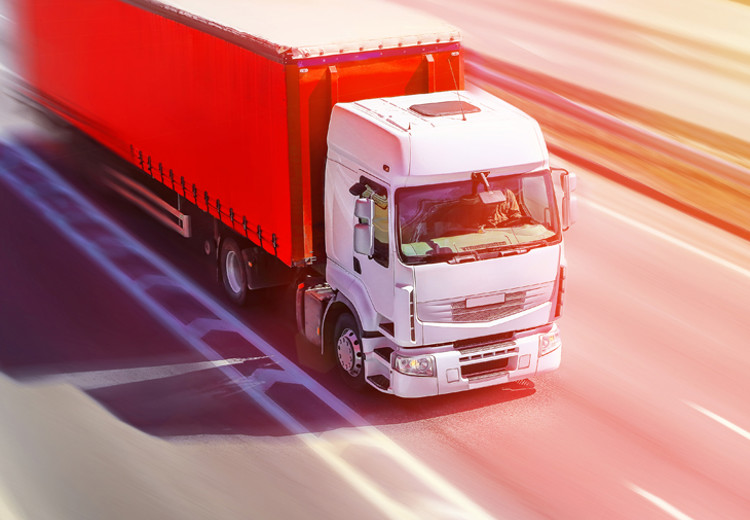Commercial vehicles
ACEA HD Sequences released
22 January 2025
31 January 2023
Tough regulations for commercial vehicles and energy conservation will drive significant change

The Indian government has recently implemented tough new fuel economy norms for light, medium and heavy duty vehicles that will apply to all new sales of commercial vehicles above 3.5 tonnes from April 1 2023. In addition, the long awaited 2022 Energy Conservation (Amendment) Act has now been passed that should ensure faster decarbonisation of the Indian economy. This Q&A session with Infineum’s S. K. Raghuram, India Director, and Mohnish Shukla, Regional Market Manager, explores these new regulations and their potential impacts.
S.K. Raghuram on the new regulations

What do you see as the biggest drivers for the introduction of the new fuel economy (FE) norms?
While in 2020 India took big steps to reduce tailpipe emissions by introducing Bharat Stage 6 (BS6), the regulatory mandates for fuel economy have so far been relatively soft. India, as part of its commitment to the Paris Agreement, which has a goal to limit global warming to well below 2oC and preferably below 1.5oC compared to pre-industrial levels, submitted its new ambitious Nationally Determined Contribution (NDC) document to the United Nations in August 2022. This document lays out plans to reduce emissions and to adopt a climate friendly and cleaner path out to 2030 and reiterates India’s long term goal of reaching net zero by 2070. India has strengthened its emissions intensity of its GDP to 45% by 2030 from 2005 levels and stated that environmentally sustainable, low carbon initiatives will underpin all key sectors of the Indian economy.
However, the fast growing economy and increased spending on infrastructure projects are expected to continue to support growth of the country’s freight industry, which should drive medium and heavy-duty diesel (HDD) truck sales. This means more trucks on India’s roads and an increase in demand for fossil fuels. In fact, trucks and buses represent about 70% of total fuel use and greenhouse gas emissions from the entire transport sector. These factors mean that the introduction of legislation to improve fuel economy in this sector is a crucial step towards meeting India’s commitments to combatting climate change.
To which vehicles do the FE norms apply?
New constant speed fuel consumption norms, which were announced in July 2022, will apply to all new commercial vehicles, excluding tippers, above 3.5 tonnes manufactured in, or imported by, India from April 1 2023. This commercial vehicle fuel economy regulation is not based on CAFC standards such as those introduced in other sectors and in other regions of the world. Instead they have been shaped on similar lines to the BS6 emissions regulations, on a per-vehicle-standard under which every vehicle model is tested for compliance before being granted a type-approval certification.
Manufacturers use a constant speed fuel consumption (CSFC) driving cycle to test vehicle performance. Fuel consumption is measured at a constant speed (40, 50 and 60 km/h) for the duration of a test. Respective equations, from notifications issued by the Ministry of Power depending on GVW and Axle configuration, are used to determine normalised fuel consumption in litres per 100km.
Commercial vehicles unable to meet the FE regulation will not be able to be sold in or imported into India. The regulation itself is unique and has taken several years to bring to this level. In the future a vehicle consumption calculation tool methodology (Bharat VECTO) may be adopted.
What are the key highlights of the new 2022 Energy Conservation (Amendment) Act?
After being approved by both houses of Parliament in India, the Energy Conservation (Amendment) Act 2022, which amends the 2001 Energy Conservation Act, came into force on January 1 2023. The amendment empowers the central government to specify a carbon credit trading scheme, which aims to reduce carbon emissions. In addition, designated consumers, including those in the industrial and transport sectors, may be required to meet a proportion of their energy needs from non-fossil sources, and energy consumption standards may be applied to vehicles and ships. The Act seeks to facilitate the achievement of COP-26 goals and, by introducing concepts such as mandated use of non-fossil sources and carbon credit trading, to ensure faster decarbonisation of the Indian economy.
Mohnish Shukla on the implications of the new regulations

How might the new Energy Conservation (Amendment) Act impact transportation?
According to the Ministry of Environment, Forest and Climate Change, transport accounts for 10% of India’s CO2 emissions, which makes it a key target for carbon reduction initiatives. Under the 2022 Act, the scope of energy consumption standards have been expanded to include vehicles, and vessels (boats and ships). Failure to comply will be punishable with a penalty of up to Rs 10 lakh. Vehicle manufacturers in violation of fuel consumption norms will be liable to pay a penalty of up to Rs 50,000 (~US$ 600) per unit of vehicles sold. It is likely that the Act will drive both the use of greener fuels and additional measures to improve vehicle fuel consumption.
How might OEMs address the requirements of the FE norms?
Clearly in order to sell into the Indian market it will be vital for OEMs to ensure their vehicles meet the requirements of the new FE norms. Since most vehicles in the heavy and medium-duty vehicle sectors will still rely on internal combustion engine (ICE) technology for propulsion for many years to come we can expect to see new technologies being incorporated to different extents into these platforms. In addition the use of lower carbon intensity fuels such as biofuels, hydrogen, ammonia and ethanol could be expected to grow.
What do these new FE norms mean for lubricant formulations?
Although hardware advancements may create a harsher environment for the oil in the combustion chamber, advanced lubricants can be designed to deliver sufficient protection while also reducing friction between moving engine parts to improve vehicle efficiency. Delivering improved fuel economy over longer oil drain intervals is a key focus for lubricant and additive suppliers.
In addition, a lever for efficiency gains is the use of lighter viscosity lubricants in heavy-duty applications. We can expect commercial vehicle lubricants to trend to lighter viscosities such as SAE 5W-30 grades at lower high temperature high shear (HTHS) levels. Specifications that support such thin fluids are API FA-4, Cummins CES 200087, Volvo VDS-5 etc. It is essential to ensure these lower viscosity lubricants deliver the same performance and engine protection as higher viscosity alternatives. Such developments will drive the use of higher quality Group III base stocks and state-of-the-art additive technologies.
Do you see any challenges ahead?
It is clear that high quality Group III base stocks together with state-of-the-art additive technologies will play a key role in formulating lower viscosity engine oils that deliver fuel economy benefits. It will be important for manufacturers of such high quality base stocks to expand their footprint in India to ensure a seamless supply chain. OEM concerns regarding hardware durability with the use of low viscosity engine oils can be addressed through engine/vehicle validation with formulations that have the pedigree to support such developments.
How can Infineum help?
As one of the world's leading formulators, manufacturers and marketers of fuel and lubricant additives, Infineum has an extensive suite of advantaged componentry designed to meet the most challenging requirements. We already have experience in the formulation of advanced low viscosity fluids that have been developed to not only help improve fuel efficiency but also to offer the performance and protection required by the latest ACEA and API lubricant specifications.
Infineum India Additive Private Limited was established in 2016 to support the anticipated growth in India. The team, located in Mumbai’s Bandra Kurla Complex (BKC), is dedicated to providing full commercial, market and technology support. It is working to develop key OEM formulations and a pipeline of products specifically to meet the future needs of the Indian market.
Sign up to receive monthly updates via email